I have used Amazon affiliate links on this page. As an Amazon Associate, I earn a commission from qualifying purchases at no added cost to you. Thank you!
The tessalata eel (Gymnothorax favagineus), is also known as the leopard moray, Laced morays, leopard moray eel, tessellate moray, or honeycomb moray. It is a species of marine fish in the family Muraenidae. It is a beautiful moray eel popular in large reef aquariums. These eels are native to the Indo-West Pacific region and can be found in areas ranging from the eastern coast of Africa and the Red Sea to Papua New Guinea, and from southern Japan to the Great Barrier Reef. However, these are large carnivorous eels, with a maximum length of up to 300 cm. However, specimens encountered in the wild or in aquariums are typically smaller, with a maximum size of about 2 feet. Tessalata eel is known for its distinctive coloration, which consists of a white to yellowish background color dotted with numerous black spots of varying size and shape.
In this article, we will delve deeper into the topics like natural habitat, appearance, behavior, and the best care of these fish. So whether you are an experienced aquarium hobbyist or a newbie to the world of fishkeeping, there is something new to learn about these fascinating creatures by reading this.
Table of Contents
Tessalata Eel Wild Distribution
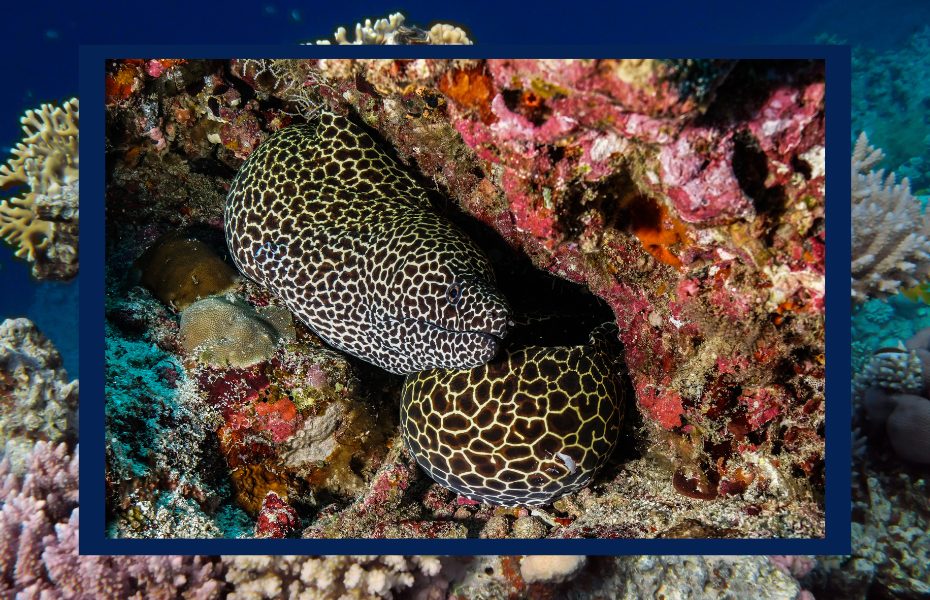
Tessalata eel is native to the tropical waters of the Indian and Pacific oceans. They can be found in a wide range of habitats, including madreporic formations, the precipices of reefs, and the cracks of coastal rocks at depths of up to 50 meters. These eels are also found in brackish waters.
They are found throughout the Indo-West Pacific region, ranging from South Africa and Madagascar to the Red Sea and the Arabian Sea, to the Seychelles, the Maldives, India, Sri Lanka, the Andaman Islands, Malaysia, Indonesia, Australia, and New Guinea. In the north, they colonize the Philippines, Taiwan, and the southern part of Japan. In the south, they are found at the Australian Great Barrier Reef.
Habitats Which They are Commonly Found
Tessalata eel is a nocturnal predator that hunts in ambush, seizing small fish and cephalopods that pass by. So they are typically found in sheltered locations, such as crevices and caves, and will often spend the day hiding in these areas. At night, they will leave their lair to hunt for prey along the reef.
However, they may also be found in estuaries, mangrove swamps, and other coastal habitats. These eels are adapted to living in a variety of environments and are able to thrive in both clear and turbid waters. They are known to have a strong sense of smell, which helps them locate prey even in poor visibility conditions.
Scientific taxonomy
Tessalata eel known as Gymnothorax favagineus scientifically, belongs to the class Actinopterygii, which includes ray-finned fishes. They are in the order Anguilliformes and the family Muraenidae. The name of the genus, Gymnothorax, comes from the Greek “gymnos” meaning naked and the Latin “thorax” meaning thorax, as these eels have a bare thorax with no scales.
The species name, favagineus, comes from the Latin “favus” meaning honeycomb and “genero” meaning to generate or create. This refers to the honeycomb pattern of the eels’ coloration. So this is why the tessalata eel is sometimes also referred to by its common names, which include honeycomb moray, leopard moray, leopard moray eel, tessellate moray, and honeycomb moray.
The appearance of this Moray Eel
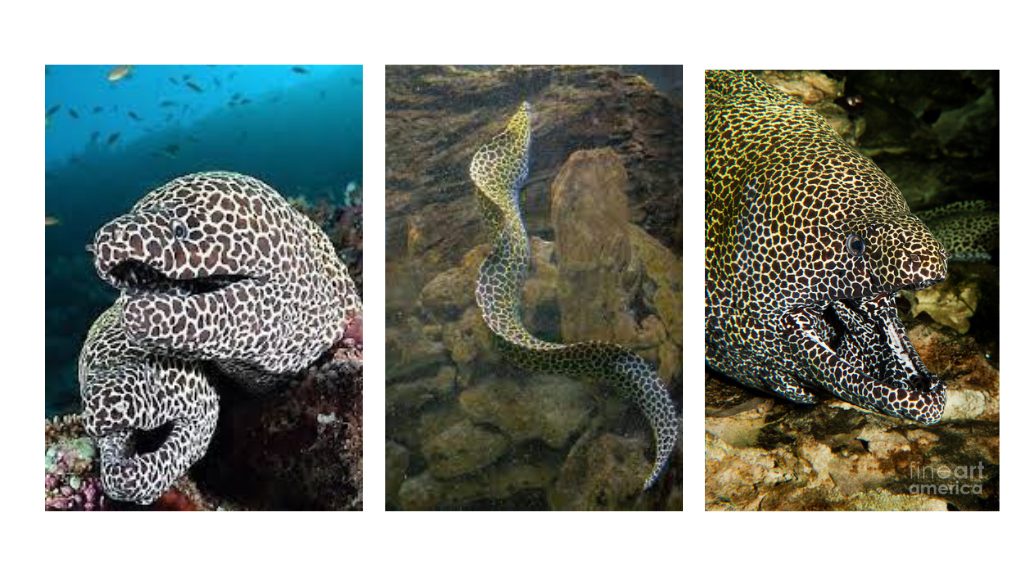
Again, these are a type of large moray eels with a maximum length of up to 3 meters and a maximum weight of 18 kg. They have a serpentine body with no scales but are protected by slippery mucus that allows them to slip into narrow spaces. These eels have four nostrils, including two that are shaped like small horns, and a mouth with sharp or hooked teeth for holding prey.
Tessalata eel is known for its distinctive coloration, which consists of a yellowish background color dotted with numerous brown or black spots. These spots create a honeycomb pattern, giving the eels their common name of “honeycomb moray” or “laced moray”. The size and shape of the spots may vary depending on the individual eel and its environment. In clear water, the eels may have fewer and smaller spots, while in turbid water they may have more and larger spots. The eels also have brown or black spots inside their mouths.
Overall, tessalata eels are known for their attractive appearance and striking coloration, which makes them a popular choice for aquarium enthusiasts who possess bigger reef tanks. We will talk about these big aquariums needs in the latter part of this post.
Tessalata Eel Diet
Gymnothorax favagineus are carnivorous fish that feed primarily on small fish, crabs, squid-like mollusks, and shrimp. They are active at night and hunt their prey along the reef, using their sharp or hooked teeth to catch and hold onto their prey. At pet fish 101 we recommend feeding these eels a large meal every 3–4 days, as they can harm themselves by overeating. If they are not eating frozen foods after a week, it may be necessary to try feeding them live fish or shrimp. It is important to vary their diet and feed them raw or fresh foods, such as whole shrimp or smelt (a small fish). The problem is that most of these eels would be introduced to the aquarium trade as wild-caught specimens, so sometimes it would require some time for them to adjust to the food which is not alive.
Behavior and Temperament
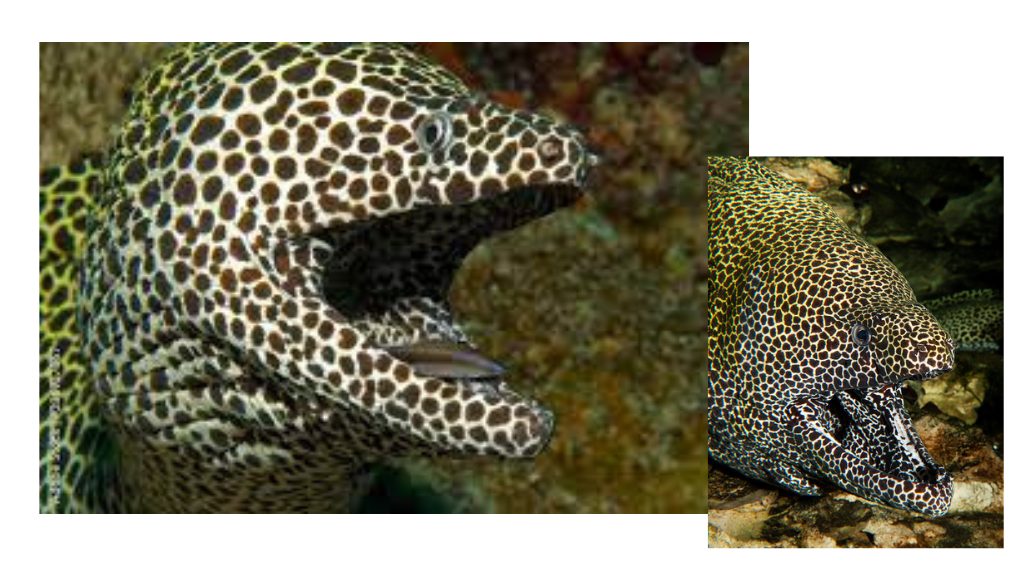
These eels are known to live on the outer slopes of coral reefs, where they can be found resting in crevices during the day. They have a habit of moving with their mouths open, which allows their gills to retrieve the water necessary for breathing.
Large adults of this species are known to be aggressive in the wild and may very well pose a threat to other fish, especially those that are relatively small in comparison to the eel’s size. It is important to provide plenty of hiding places and a lot of space when keeping these honeycomb morays, as this can help to alleviate aggressive behavior. It is also recommended to regularly feed these eels and provide them with a varied diet. Despite their potential for aggression, these fish are not known to attack humans and are generally considered safe to keep as long as proper precautions are taken.
Suitable Tankmates For Tessalata Eel
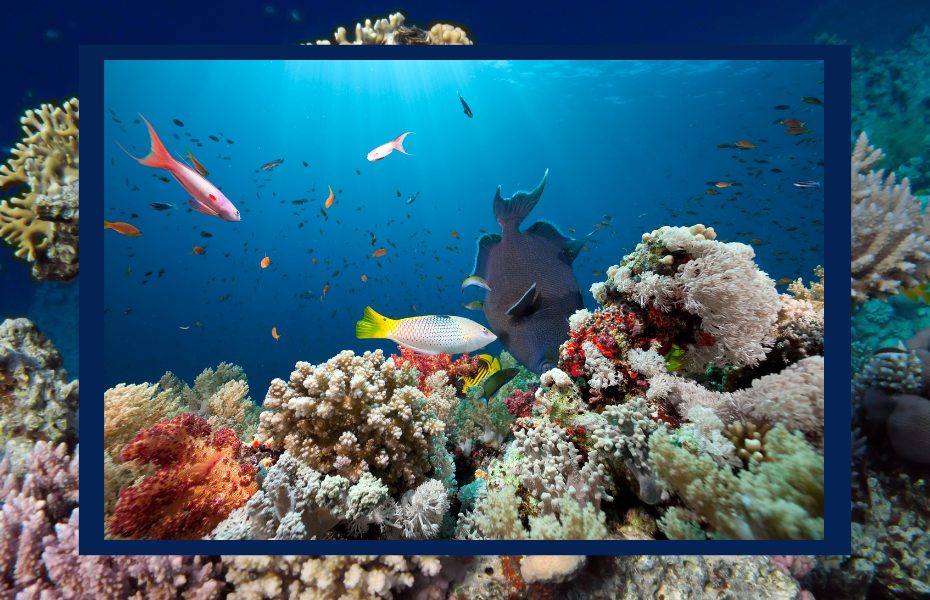
Like I said before, tessellata morays are known to be aggressive towards other fish and may pose a threat to species that are relatively small in comparison to their own size, like the Engineer Goby. Therefore, it is important to be cautious when choosing tankmates for these eels. It is generally best to avoid keeping peaceful or docile species with laced morays, as they may be at risk of being attacked or harassed by the more aggressive eels.
Some potential tankmates for laced morays include other larger, more aggressive fish species such as big lionfish, triggerfish, and groupers. These fish are generally able to hold their own against the eel and may not be at risk of attack. It is also important to provide plenty of hiding places and a lot of space in the tank to help alleviate aggressive behavior and give all the fish plenty of room to coexist peacefully. As always, it is important to carefully research and consider the temperament and needs of all the fish being kept together in the same tank to ensure a harmonious and healthy community.
Tank Size
Tessellate moray, is known to grow large, and is capable of reaching a maximum length of 300 cm. As a result, these eels require a correspondingly large tank to thrive. While it is difficult to give a precise size for the minimum tank size needed for a tessalata eel, it is generally recommended to have a tank with a volume of at least 2000 liters (528 gallons) to accommodate these fish.
It is also important to consider the overall size and dimensions of the tank, as eels are known to be good climbers and may try to escape if given the opportunity. A tank with a secure, properly fitting lid is crucial to prevent any accidental escapes. Providing plenty of hiding places and ample swimming space is also important to ensure the physical and mental well-being of the eel. Overall, it is crucial to provide a spacious and suitable habitat for these fish to ensure their health and happiness in the aquarium.
Aquascaping Your Tank For Tessalata Eel
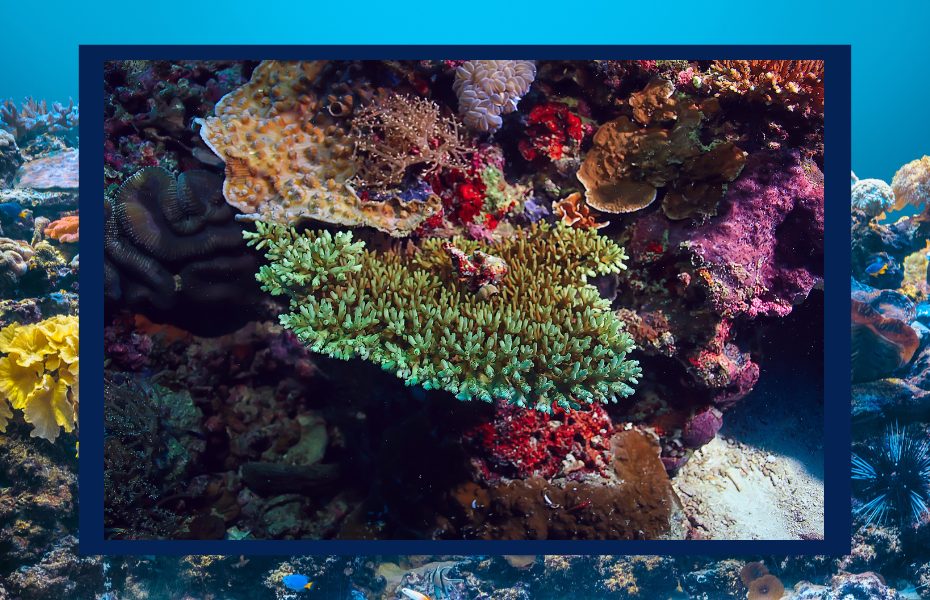
When designing an aquarium setup for tessalata moray eels, it is important to consider and replicate the natural habitat and behaviors of these fish. As mentioned earlier, they are native to the coral reefs of the Indian and Pacific Oceans and tend to prefer hiding in crevices and cavities during the day. In the wild, they are known to inhabit rocky outcroppings and coral reefs, so replicating this type of environment in the aquarium can help provide a suitable and stimulating habitat for these eels.
To recreate a natural coral reef environment, consider using a variety of live rock and other decorative elements to create a complex and visually appealing aquascape. Adding caves, crevices, and other hiding places will give the eel plenty of places to retreat to during the day and can help reduce stress and promote a sense of security. It is also important to provide plenty of open swimming space, as eels are known to be active and agile swimmers.
Incorporating live plants can also be a great way to add visual interest and provide additional habitat for smaller fish and invertebrates, but yet again, it is important to keep in mind that tessalata eel is carnivorous and may pose a threat to any smaller species kept in the same tank. When designing an aquascape for these eels, it is crucial to carefully consider the needs and behaviors of these fish and to provide a spacious, secure, and naturalistic environment that will allow them to thrive.
Ideal Water Conditions
Tessalata eel is generally hardy and adaptable when it comes to water conditions. However, to ensure the health, well-being, and full life expectancy of these marvelous fish, it is important to maintain certain water parameters within a specific range.
In terms of temperature, this eel is best kept in water that is between 75-82°F (24-28°C). It is important to maintain a stable temperature, as fluctuations can be stressful for these fish.
In terms of pH, a range of 8.1-8.4 is generally considered ideal. It is also important to maintain a moderate level of water hardness, with a range of 8-12 dKH being suitable for these eels.
In terms of filtration and water flow, these large moray eels prefer a moderate to high level of flow and will benefit from the use of a high-quality protein skimmer. It is also important to perform regular water changes to remove any excess nutrients and maintain water quality, as these fish will produce a lot of waste and make a mess when they eat.
Overall, it is important to monitor water parameters on a regular basis and make any necessary adjustments to ensure that the tank is maintaining ideal water conditions for these eels. By keeping the water clean and well-maintained, you can help promote the health and well-being of these beautiful and fascinating fish.
Tessalata Eel Breeding
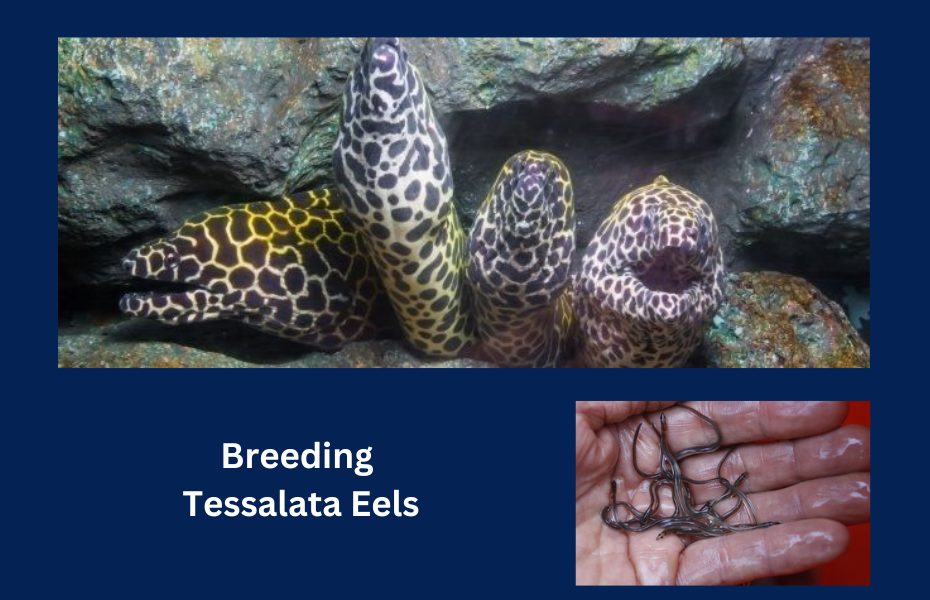
Breeding honeycomb moray/tessalata eel in an aquarium setting is not a common occurrence, as these fish are not typically bred in captivity. However, there have been some instances of these fish being bred in public aquaria and research facilities.
In the wild, tessalata eels are known to spawn in the open ocean, with the larvae, known as leptocephali, being pelagic (meaning they live in the open water column). The larvae are transparent and have a leaf-like shape, with a very small head and an elongated body. This larval stage can last for several months before the young eels settle onto the bottom and begin to take on the characteristic appearance of adult eels.
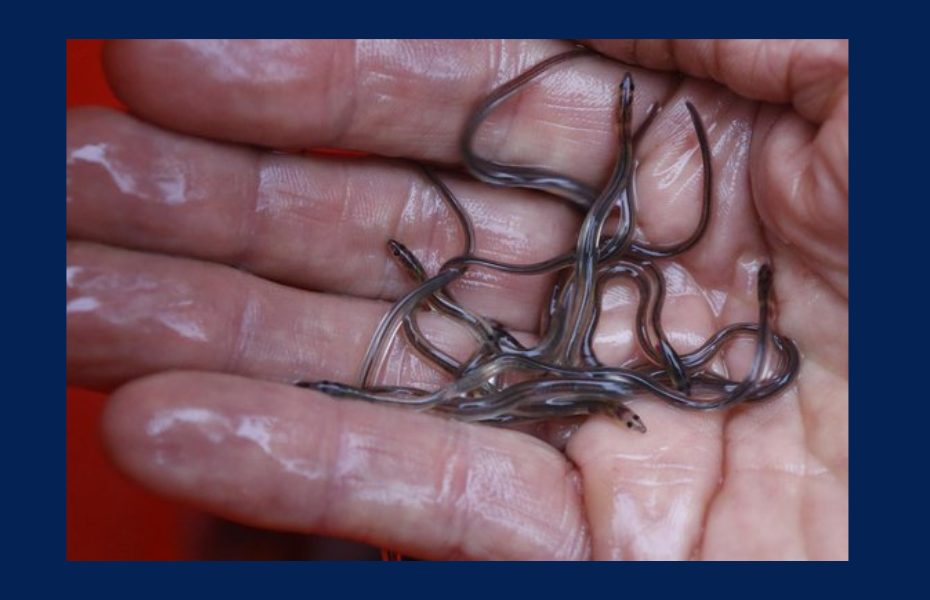
Given the challenges involved in breeding these fish in an aquarium setting, it is not recommended for most hobbyists to attempt breeding these fish. However, if you are an experienced aquarist with the resources and expertise to provide the specialized care and conditions necessary for these fish, you may be able to successfully breed these eels in an aquarium setting. It is important to thoroughly research and plan before attempting to breed any species of fish and to be prepared for any challenges that may arise.
Common Diseases & Prevention
These eels are generally hardy and disease-resistant fish when kept in a well-maintained tank with appropriate water conditions. However, like all other fish species out there, they can be susceptible to certain health issues if their care and environment are not optimal.
Some common diseases that can affect tessalata eel include:
- ichthyophthiriasis (also known as “ich” or white spot disease), caused by a parasite that attacks the skin and gills of the fish
- fungal infections, which can cause symptoms such as white or gray patches on the skin or fins
- bacterial infections, which can cause symptoms such as redness or swelling, ulcers, or abnormal discharge
- parasitic infections, which can cause symptoms such as scratching, loss of appetite, or weight loss
To help prevent these and other diseases, it is important to maintain good water quality in the tank, including regular water changes and monitoring of water parameters such as pH, temperature, and ammonia and nitrite levels. It is also important to ensure that the tank is properly filtered and well-ventilated and to avoid overcrowding or overfeeding the fish.
In addition, it is a good idea to quarantine any new fish before introducing them to the main tank, to help prevent the spread of any potential diseases. If you notice any unusual symptoms in your tessalata eel, it is important to isolate the affected fish and seek the advice of a veterinarian or other qualified professional as soon as possible.
Special Care Tips
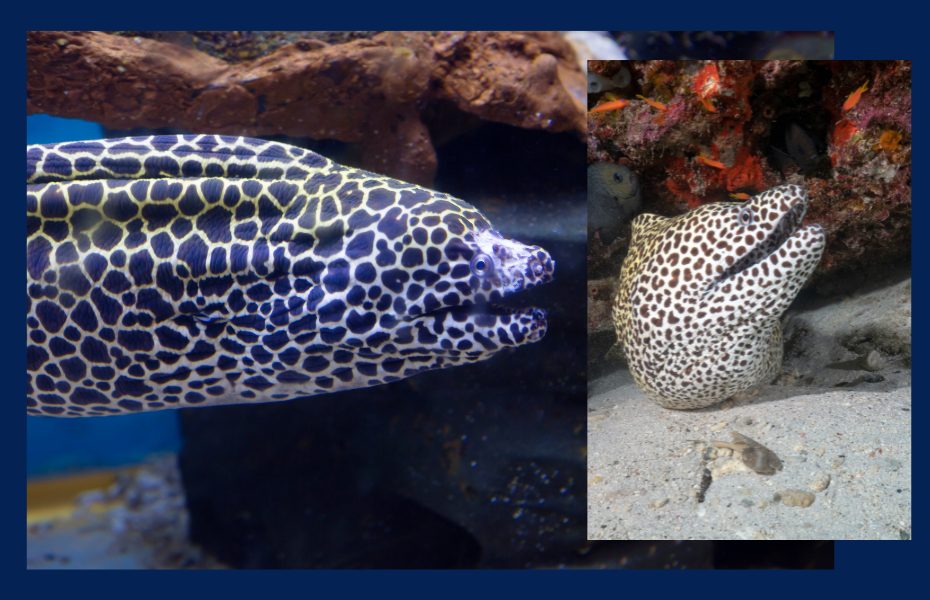
As pointed out earlier, these big moray eels are generally hardy and easy to care for if their basic needs are met. Here are some special care tips to help ensure the health and well-being of these beautiful fish:
- Provide a suitable tank: Tessalata eels need a large tank with plenty of space to swim and hide. A tank size of at least 2000 liters (528 gallons) is recommended for these fish. The tank should also be well-filtered and well-ventilated to help maintain good water quality.
- Maintain appropriate water conditions: Tessalata eel prefers a temperature range of 22-27°C (72-81°F) and a pH range of 8.1-8.4. It is important to monitor and maintain these parameters to help prevent stress and disease in the fish.
- Feed a varied diet: Tessalata eels are carnivorous and will accept a wide range of meats, including small fish, shrimp, and squid. It is important to feed them a varied diet to ensure that they receive all the nutrients they need.
- Provide plenty of hiding places: Tessalata eels are nocturnal and need plenty of places to hide during the day. Provide them with caves, crevices, and other structures in the tank to help them feel safe and secure.
- Handle with care: Tessalata eel can be delicate and can easily be damaged if handled improperly. When cleaning the tank or handling the fish, be sure to use gentle, non-abrasive methods to avoid injury.
- Seek professional advice: If you have any concerns about the health or care of your tessalata eel, don’t hesitate to seek the advice of a veterinarian or other qualified professional. They can provide expert guidance and help you ensure that your fish are happy and healthy.
Conclusion
In conclusion, tessalata eel (Gymnothorax favagineus) are beautiful and fascinating fish that make an interesting addition to the right aquarium. With their unique appearance and nocturnal habits, they add a touch of mystery and excitement to any tank. While they do require a little extra care and attention, both for the eel and its tankmates, with the right set-up and husbandry, these fish can thrive and provide endless enjoyment for their owners. If you are considering adding these large, carnivorous fish to your tank, be sure to do your research, provide a suitable environment, and seek professional advice as needed to ensure the best possible care for your fish.
Wanna join our Reddit discussion? Please follow this link here.